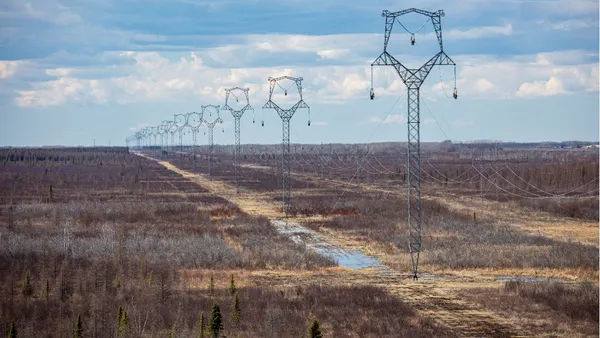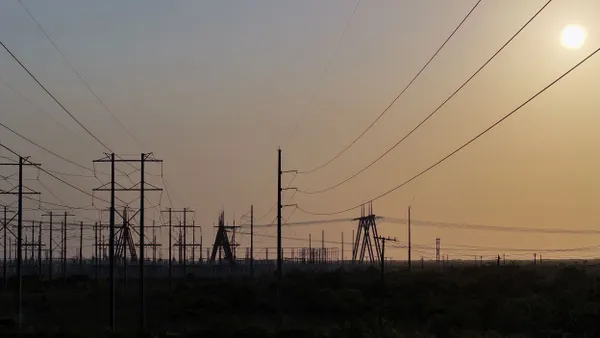Natural gas has quantifiably helped cut U.S. greenhouse gas emissions, but new research suggests most accounts greatly exaggerate its role in pollution cuts in recent years.
Going forward, if the U.S. is going to dramatically reduce carbon pollution in line with the Obama administration's goals and international benchmarks, it will take much more than building new natural gas capacity to replace coal, according to a new study published in the journal Nature last week.
"Our findings are very different than those of other agencies," explained University of Maryland Professor Kuishuang Feng, co-author of the study, "Drivers of the US CO2 emissions 1997–2013."
The aim of the research is to further explain a significant reduction in U.S. carbon emissions in recent years — a reduction often attributed to natural gas replacing coal in the nation's fuel mix.
“Emissions in the U.S. peaked in 2007. Between 2007 and 2009, which was when the economic recession started to bite, there was a big, almost 10%, decrease in the emissions,” said report co-author Steven J. Davis.
“Changes in the fuel mix and the shift from coal to natural gas definitely contributed to the decrease in emissions, but it was a minor part of the decrease," he said.
Emissions fell, Davis said, "mostly because of a decrease in the goods and services that were being consumed.”
While that conclusion may seem intuitive given the financial crisis and impending recession, many scholarly accounts of U.S. emissions at the time put much more emphasis on the role of gas.
Two examples, Feng noted, are a U.S. Energy Information Administration assessment from last year and the International Energy Administration’s 2013 report, "Redrawing the Energy Climate Map."
And the most recent U.S. National Climate Assessment similarly reported the U.S. CO2 emissions reduction was “largely due to a shift from coal to less CO2-intensive natural gas for electricity production.”
“Their assessments are technically correct, but they focus on the production side and on electricity generation,” Feng explained. “Our analysis includes both consumption and production factors. It is a more complete story.”
The paper looks at a range factors, included in the chart below:
- Population growth
- Changes in consumption volume caused exclusively by changes in per capita consumption of goods and services
- Shifts in consumption patterns or the types of goods and services being consumed
- Adjustments in production structure or the mix of inputs (labor and domestic and imported materials) to produce US goods and services
- Changes in fuel mix (CO2 emitted per unit of energy used)
- Changes in energy intensity (energy used per inflation-adjusted unit of economic output)
Rising and falling emissions
U.S. emissions increased 7.3% from 1997 to 2007. The main factor, the paper reports, “was an increase in consumption volume caused by growth in per capita consumption of goods and services.” That consumption was over a fifth (21.8%) of the 7.3% emissions increase. Population growth was the next most important factor, at just under a tenth (8.9%) of the 7.3% increase.
Increases in energy efficiency, decreasing the energy intensity of the economy, “exerted a downward influence on emissions” in that period, as did the beginning of the shift away from coal, the research finds.
Emissions fell about 11% from 2007 to 2013. Only population growth pushed emissions upward. Changes in the production structure accounted for 6.1% of the 11% drop. Also driving emissions down were changes in the fuel mix (4.4%), changes in per capita consumption (3.9%), changes in energy intensity (0.5%), and changing consumption patterns (0.4%):
The researchers discovered in the data that different factors dominated the 9.9% emissions decline from 2007 to 2009, the 1.3% emissions increase from 2009 to 2011, and the 2.1% decrease between 2011 and 2013.
During the deepest part of the economic recession from 2007 to 2009, data shows over half (53%) of the 9.9% emissions reduction “was due to a sharp drop in the volume of consumed goods as a result of reduction in per capita consumption.”
Data on capital expenditures and exported goods emphasizes the finding. Changes in production structure were almost a third (30%) of the reduction. Fuel mix changes, primarily a shift from coal to natural gas, were 17% of the decrease. Energy intensity and consumption pattern had “modest upward influences.”
From 2009 to 2013, with the economy recovering, there was only a 0.2% decrease in U.S. emissions. Consumption of more low-carbon goods and overall improving energy intensity kept the 1.3% increase from 2009 to 2011 down. Multiple factors, of which improved energy intensity was twice as strong as changes in the fuel mix, drove the 2011 to 2013 net 2.1% emissions decrease.
Natural gas is a major factor in fuel mix changes. It also helps improve energy intensity by making power plants more efficient. But those changes do not account for the big emissions decrease from 2007 to 2009 and do not explain the relatively flat emissions patterns afterwards. Economic recession and emerging economic recovery explain both.
Preliminary 2014 EIA data suggests emissions are once again on the rise, in part due to 2014’s colder winter, but more because of theongoing economic recovery and little additional benefit from natural gas, Davis said.
“The overarching point we make in the paper is that while gas has contributed to some extent to the decrease in emissions, the main driver during the years of the recession is we consumed less stuff,” Davis explained. “Since then, U.S. emissions have been basically flat. As the economic recovery continues, emissions will likely rise again unless we get stronger policies in place.”
Solutions
Davis was surprised by the limited impact of fuel mix changes on U.S. emissions.
“It has gotten so much attention from the politicians and pundits. And some of my scientist colleagues have tried to use it as an explanation,” he said. “I didn’t think they would all be wrong but when we dug in we didn’t find the evidence of it.”
The difference between the myth and the reality, he hypothesized, could be the hope, after attempts to put climate legislation in place failed, “that gas would come to the rescue and there would be a spontaneous decarbonization of the U.S. economy despite a lack of policy.”
But, he said, “if you were going to go on a diet, would you eat reduced fat Oreos or salad? Natural gas is reduced fat Oreos. It is still a fossil fuel. There is still a lot of CO2 involved. If we were serious about cutting emissions, we need to be thinking about a more radical solution.”
Feng was also most surprised by “how wrong the literature gets it and how much emissions reductions correlate with consumption,” he said. “Without the decreased consumption during the recession, and purely relying on the fuel mix shift, there would be no significant emissions reductions.”
Both researchers say that on the emissions question, the natural gas boom raises additional concerns. They cited a 2014 paper co-authored by Davis, titled "The effect of natural gas supply on U.S. renewable energy and CO2 emissions."
“Cheap unregulated natural gas would compete with coal, but also with renewables,” Davis summarized. “It helps reduce emissions by competing with coal but hurts emissions reductions by competing with and delaying the use of renewables. The result is almost no change in CO2 emissions.”
The implication, he said, is any shift to natural gas must be accompanied by “well-crafted policies that assure it is directed against coal but doesn’t hinder the progress of solutions like renewables.”
“Further emissions reductions require policies that act on the demand side and influence consumer activity, like a carbon tax or emissions trading, that impose costs for climate impacts,” Feng said.
The goal should be decoupling economies from emissions, Davis explained.
“People think gas is helping to do that, keeping the economy going while decreasing emissions, but really, not so much," he said. "We did not decouple the two. The recession caused the decrease. They are still coupled."
In the end, he said, much will depend on the energy intensity of the overall economy and governmental policies that influence it.
"If we want to decouple our economy from CO2 emissions we need to be more aggressive about changing our energy sector and improving our efficiency," he said.













